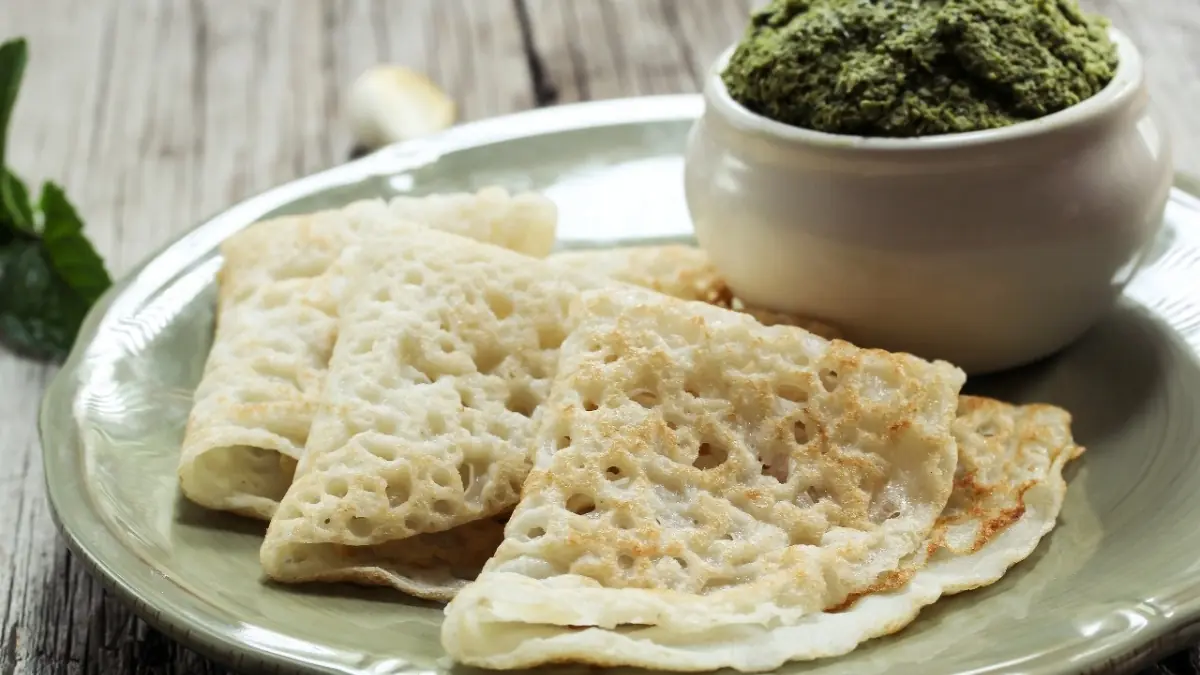Neer dosa is a culinary jewel that comes from the coastal belt of Karnataka. The word ‘neer’ translates to ‘water,’ which perfectly describes the runny consistency of the batter used to make the dosa. With the watery consistency, the dosa has a distinct, paper-thin, delicate, and soft texture.
Another thing that distinguishes neer dosa from the other South Indian staples is that it is not made with fermented rice. All you need is to soak the rice overnight in water, blend it with some more water, and your batter will be ready.
Since it’s made with minimal ingredients, neer dosa is impeccable for people facing digestive distress. Being soft, light, and easy to digest, neer dosa can be the perfect breakfast, brunch, or even a light dinner option.
And even though you think the white-coloured dosa, with its holes, is difficult to make, this recipe makes the process pretty straightforward. This guide not only covers the step-by-step recipe of the Karanaraka staple, but also co
Neer dosa is a culinary jewel that comes from the coastal belt of Karnataka. The word ‘neer’ translates to ‘water,’ which perfectly describes the runny consistency of the batter used to make the dosa. With the watery consistency, the dosa has a distinct, paper-thin, delicate, and soft texture.
Another thing that distinguishes neer dosa from the other South Indian staples is that it is not made with fermented rice. All you need is to soak the rice overnight in water, blend it with some more water, and your batter will be ready.
Since it’s made with minimal ingredients, neer dosa is impeccable for people facing digestive distress. Being soft, light, and easy to digest, neer dosa can be the perfect breakfast, brunch, or even a light dinner option.
And even though you think the white-coloured dosa, with its holes, is difficult to make, this recipe makes the process pretty straightforward. This guide not only covers the step-by-step recipe of the Karanaraka staple, but also comes with handy tips about what could go wrong and the common fixes.
Read More
Tips and Tricks
1 It is recommended that you use short-grain rice like sona masuri or idli rice to make a smooth batter. This also helps to make neer dosa gluten-free, perfect for people with allergies.
2 Don’t parboil the rice, just soak it overnight to get the soft texture of a traditional neer dosa.
3 Before pouring a ladle of the batter, make sure the tawa is medium hot. If it is too hot, the batter won’t spread, and if the temperature is too cold, the batter will stick to the tawa.
4 Always pour the batter from a height in a circular motion, starting from the edge, moving inwards. It will help the batter to spread on its own without you having to spread it outwards later on.
5 Once you see a neer dosa’s distinct holes, allow it to cool for half a second. Then, you can fold or roll it as you prefer.








